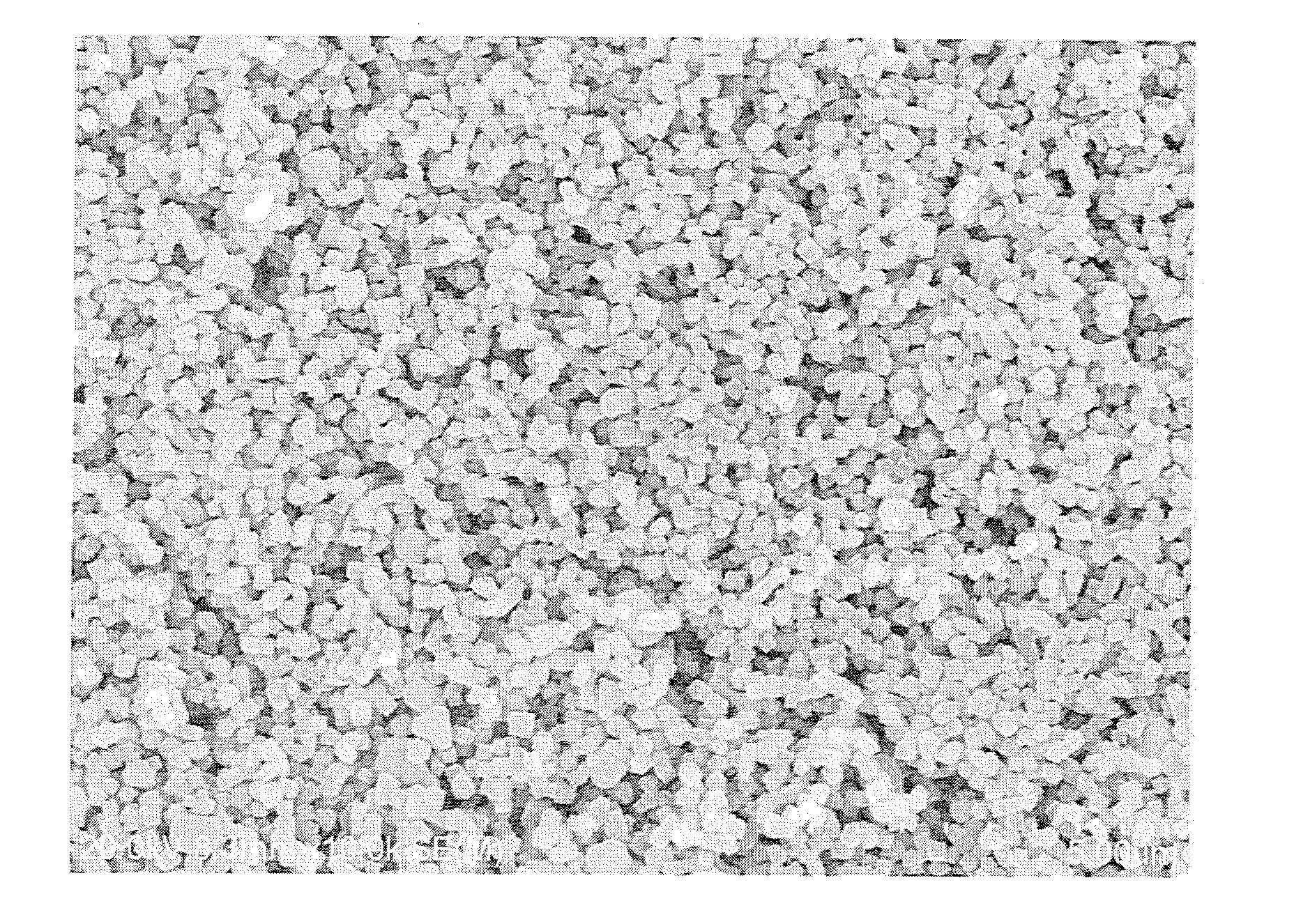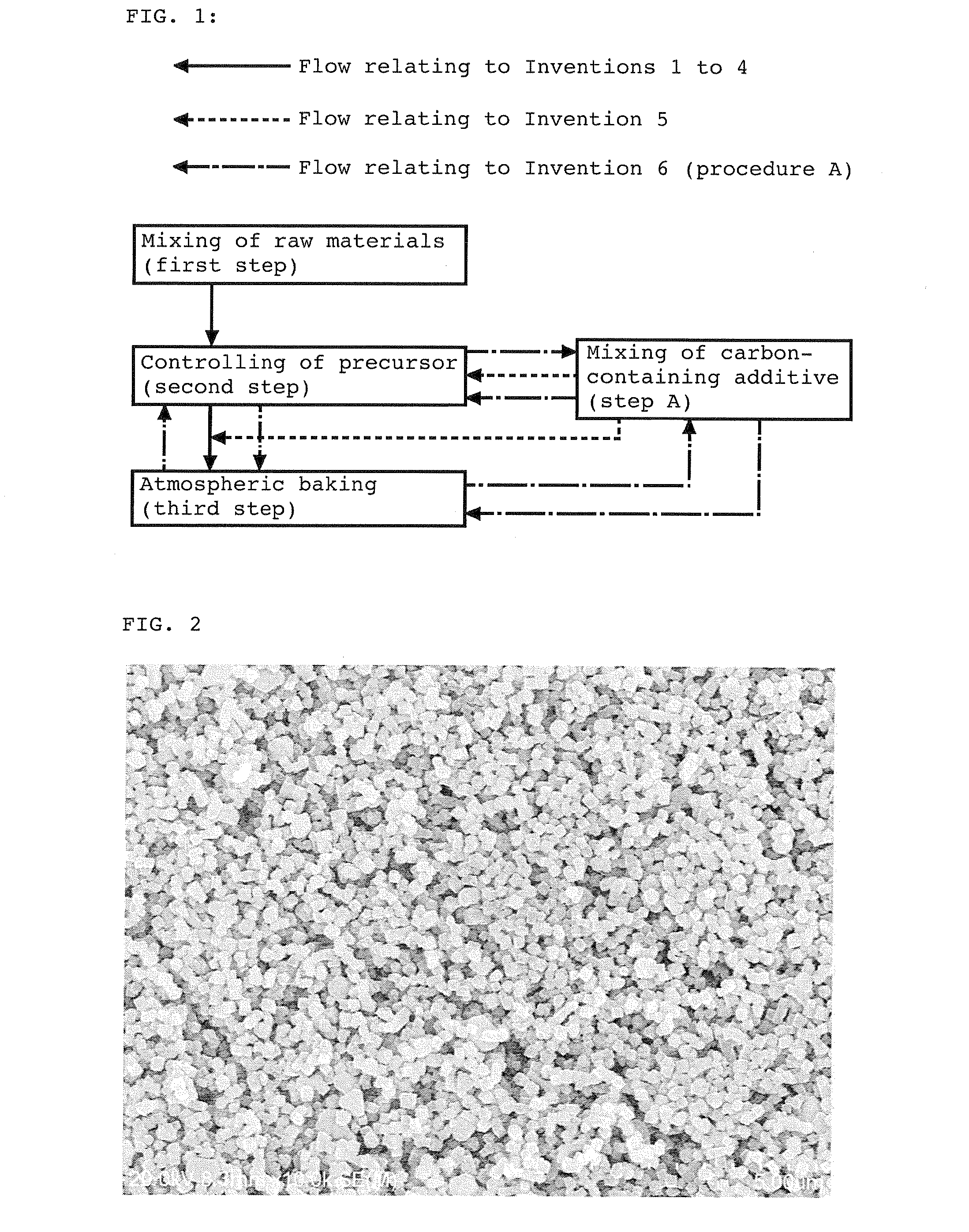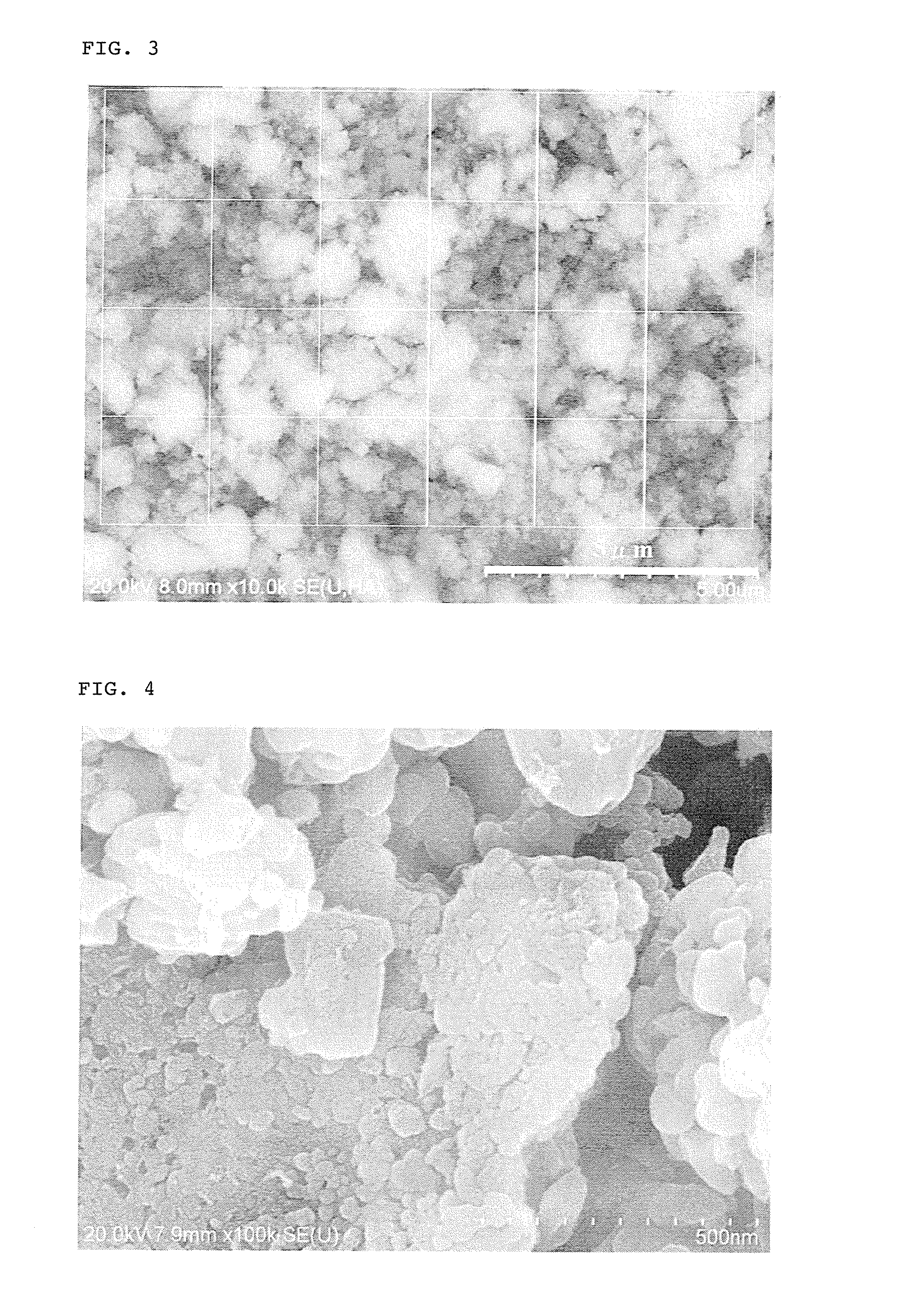Process for producing lithium iron phosphate particles, lithium iron phosphate particles having olivine type structure, and positive electrode sheet and non-aqueous solvent-based secondary battery using the lithium iron phosphate particles
- Summary
- Abstract
- Description
- Claims
- Application Information
AI Technical Summary
Benefits of technology
Problems solved by technology
Method used
Image
Examples
example 1
[0129]The iron raw material No. 1 shown in Table 1 was mixed with LiH2PO4 at the charging ratios shown in Table 2, i.e., at the ratios of Li / Fe=1.01 and P / Fe=1.01, using an attritor so as to produce 10 g of lithium iron phosphate particles (first step).
[0130]Next, the mixed particles obtained in the first step and a given amount of acetylene black were charged into a ZrO2 ball mill container, and ethanol was added thereto to adjust a concentration of the resulting slurry to 30% by weight. Using 5 mmφ ZrO2 balls, the slurry was subjected to pulverization and then precision mixing for 24 hr, and then dried at room temperature (removal of the solvent), thereby obtaining a precursor.
[0131]The secondary electron image of the iron raw material used above is shown in FIG. 2, and the back-scattered electron image of the resulting precursor is shown in FIG. 3. The average primary particle diameter of the iron raw material used was 200 nm. Twenty four squares each having a size of 2 μm×2 μm w...
examples 2 , 3 and 8
Examples 2, 3 and 8
[0135]The respective experiments were carried out under the conditions shown in Table 2. The conditions not shown in Table 2 were the same as those used in Example 1. However, a given amount of the carbon-containing additive was compounded after the second step using a dry-type ball mill. The properties of the obtained lithium iron phosphate particles having an olivine type structure are shown in Table 3. As a result, similarly to Example 1, the obtained particles were fine particles having an olivine type structure, and the compositional ratios between Li, Fe and P as well as the compositional ratios between all of the additive elements except for the additive element C, and Fe were consistent with those of the first step within a measuring error range of 3%.
examples 4 , 5 and 7
Examples 4, 5 and 7
[0136]The main raw materials were mixed with each other at a given mixing ratio by a wet method (aqueous solvent) using a ball mill so as to produce 150 g of lithium iron phosphate particles, and the resulting mixture was dried at 70° C. for 12 hr. In the above step, as the lithium and phosphorus-containing main raw materials, Li3PO4 and H3PO4 were used (first step).
[0137]The dried product obtained above and a given amount of the carbon-containing additive were pulverized for 24 hr using a 5 mmφ ZrO2 dry-type ball mill (step A, second step), and then subjected to calcination at 400° C. for 2 hr in a nitrogen atmosphere (third step). After conducting the pulverization and mixing in the dry-type ball mill, the resulting particles were subjected again to heat treatment at 650° C. for 2 hr in a nitrogen atmosphere (Procedure A).
[0138]The properties of the thus obtained lithium iron phosphate particles having an olivine type structure are shown in Table 3. As a result,...
PUM
 Login to View More
Login to View More Abstract
Description
Claims
Application Information
 Login to View More
Login to View More - R&D
- Intellectual Property
- Life Sciences
- Materials
- Tech Scout
- Unparalleled Data Quality
- Higher Quality Content
- 60% Fewer Hallucinations
Browse by: Latest US Patents, China's latest patents, Technical Efficacy Thesaurus, Application Domain, Technology Topic, Popular Technical Reports.
© 2025 PatSnap. All rights reserved.Legal|Privacy policy|Modern Slavery Act Transparency Statement|Sitemap|About US| Contact US: help@patsnap.com



